The utility scale developer landscape today consists of challenges such as large generator interconnection queues, lack of new transmission construction, supply chain issues, and regulatory uncertainty. This article highlights how Qcells USA Corp. tackles these issues head on to achieve commercial operations.
Issue 1: Interconnection Queues
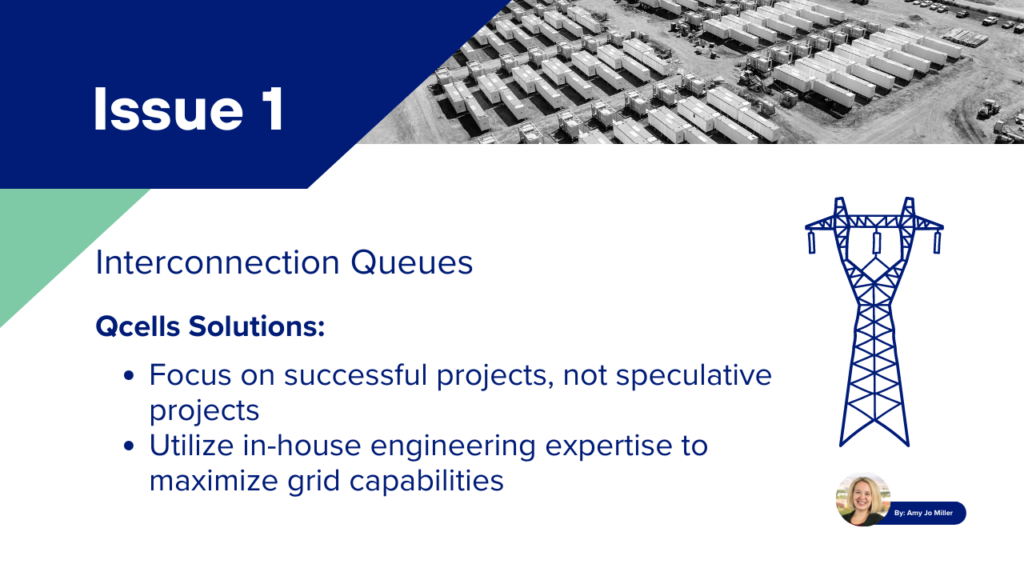
As the interconnection queues get larger due to more submissions, they slow down the engineering process because there are more points of interconnection, more dispatch assumptions and more potential overloads to the studies being performed.
The United States is in a situation where clean energy projects are outpacing the planning and construction of electrical infrastructure needed to carry that power to cities. The US will likely need 47,300 GW-miles of new transmission by 2035. This is a 57% increase compared to today’s transmission system under a moderate load growth-high clean energy growth scenario, according to a 2023 Department of Energy draft report. We all know more transmission needs to be built, yet that process is very contentious and time consuming.
Solution: Qcells focuses on project success and not speculative projects. In-house engineering skills and expertise concentrates on maximizing the usage of transmission grid capabilities today and tomorrow.
Qcells USA Corp has a highly qualified in-house development team. We seek strategic locations that lead to successful projects such as site control, proximity to electrical utility owned substations and other viability criteria to ensure each GIR (Generator Interconnection Request) submission is set up for success.
Qcells utilizes our in-house interconnection team strength to perform load flow, deliverability, and other studies through PSSE and TARA to identify the optimal locations for the placement of generator resources across the United States with the ever-decreasing available transmission capacity.
The team uses the robust production cost simulation tool PROMOD to develop SCED (Security Constrained Energy Dispatch) economic models to determine the congestion and curtailment risk using LMP (Locational Marginal Pricing) pricing. PROMOD models all existing, planned and committed transmission facilities to capture revenue forecasts and energy arbitrage potentials from energy storage and hybrid projects.
The team also performs the anticipated network upgrade cost estimates for the proposed projects and initial engineering design of interconnection facilities while also verifying and challenging System Impact and Facility Study results to ensure optimal usage of available transmission capacity.
Issue 2: Supply Chain
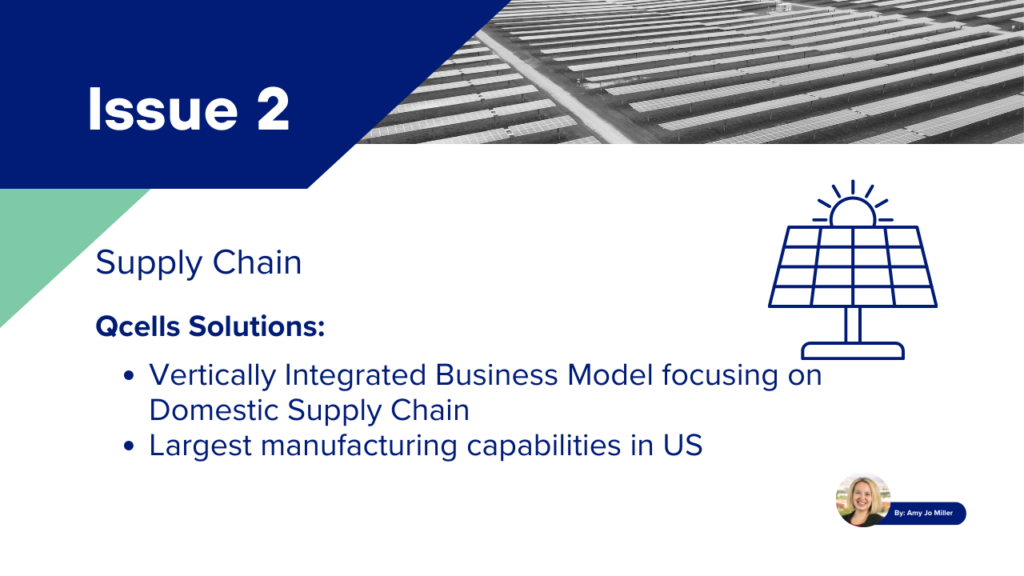
Developers are facing delayed commercial operation dates for several projects due to various supply chain constraints including the increase demand for renewable and clean energy.
Solution: Vertically Integrated Business Model focusing on Domestic Supply Chain
Qcells has tackled the supply chain dilemma by investing to build a complete solar supply chain in the US.
Qcells will further expand with our recently announced $2.5 billion investment, the largest of it’s kind for solar ever in the US. This will expand our Dalton module plant and have a new, state-of-the-art integrated facility in Bartow County, Georgia. Our new Bartow factory is planned to:
· Manufacture 3.3 gigawatts (GW) of solar ingots, wafers, cells and finished panels, respectively.
· Qcells will also assemble an additional 2 GW of solar panels at our Dalton, Georgia facility expansion, bringing total capacity there to 5.1 GW.
· The two factories combined will create nearly 2,500 direct jobs in Georgia – with Georgia employment reaching nearly 4,000 once all facilities are operational.
· Qcells’ investment is expected to bring our total solar panel production capacity in Georgia to 8.4 gigawatts by 2024.
Qcells stands out in the developer community due to in-house development, EPC, module sales, IPP, project finance and systems integration. Qcells is set up for success with (1) our complete integrated value chain and (2) being a turnkey solutions provider with financial wherewithal.
Issue 3: Regulatory Uncertainty
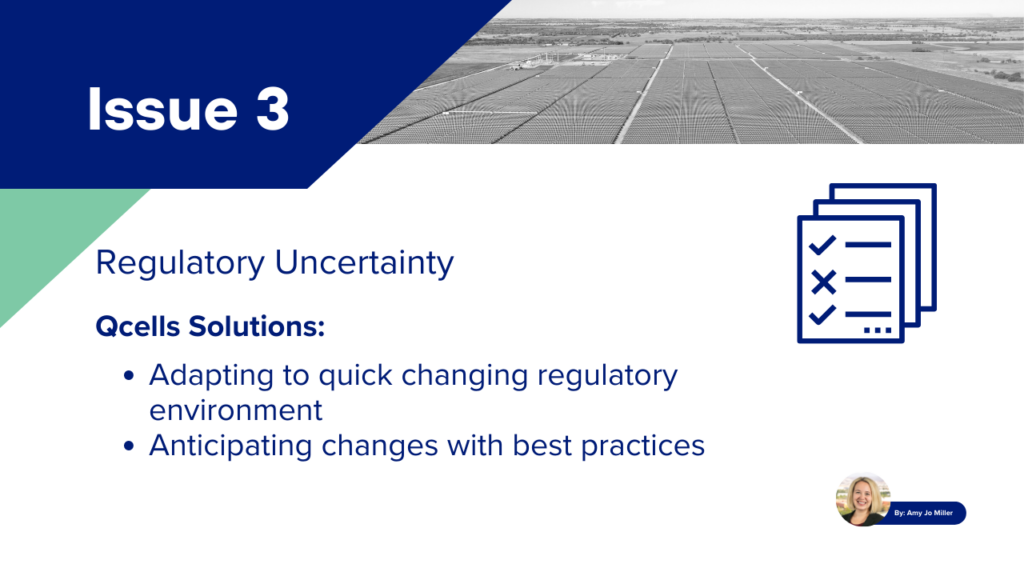
From CAISO, NYISO, PSCo, ARP, SRP, and more – interconnection queue reform is in full swing! This means uncertainty regarding rules for future projects as well as rules for projects in the existing queues today.
Solution: Adapting to fast changing regulatory environment and more stringent Tariff obligations.
Some RTO queues (i.e. MISO) are receiving more interconnection applications than native load within its footprint, Qcells is witnessing and planning for changes such as full site control needed to enter the queue and other new or enhanced requirements to enter the queue.
It is expected soon FERC (Federal Regulatory Energy Commission) will rule on the Interconnection NOPR (Notice of Proposed Rule Making) possibly requiring some degree of commercial readiness (term sheet, resource solicitation process) to enter the interconnection queues. Qcells is actively participating in these Tariff reforms and are prepared for the ever-evolving change of interconnection rules occurring today and on the horizon.
Conclusion
Qcells builds upon our integrated business model to tackle issues from supply chain to rising costs. Completely clean turnkey solutions provides both customers satisfaction and reliability for the grid.
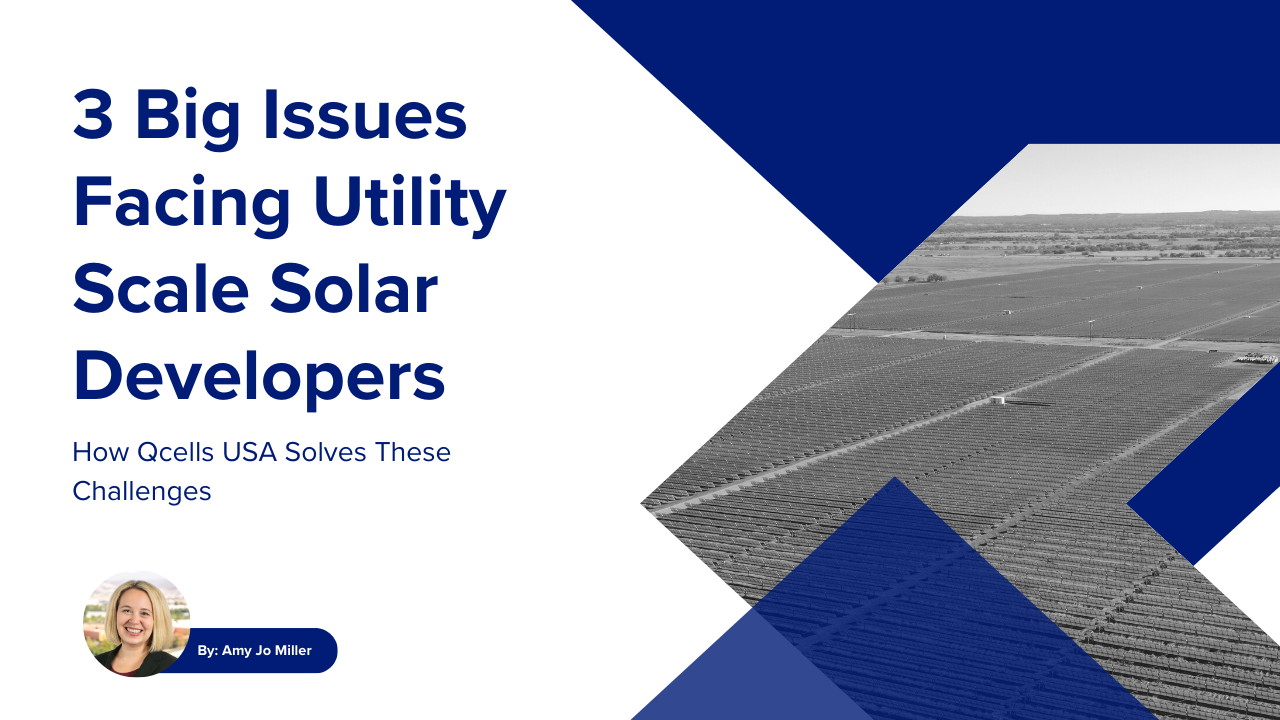
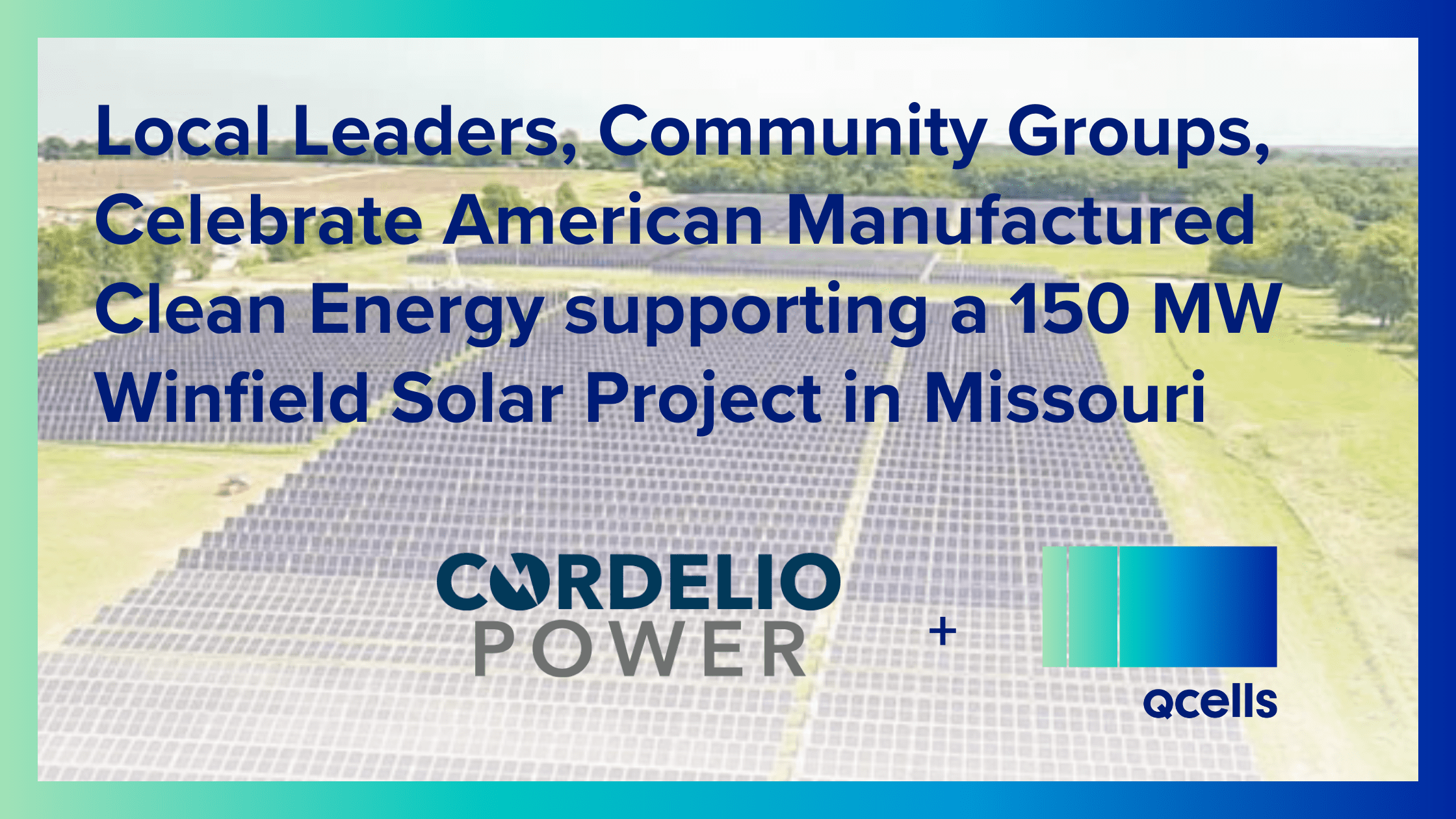
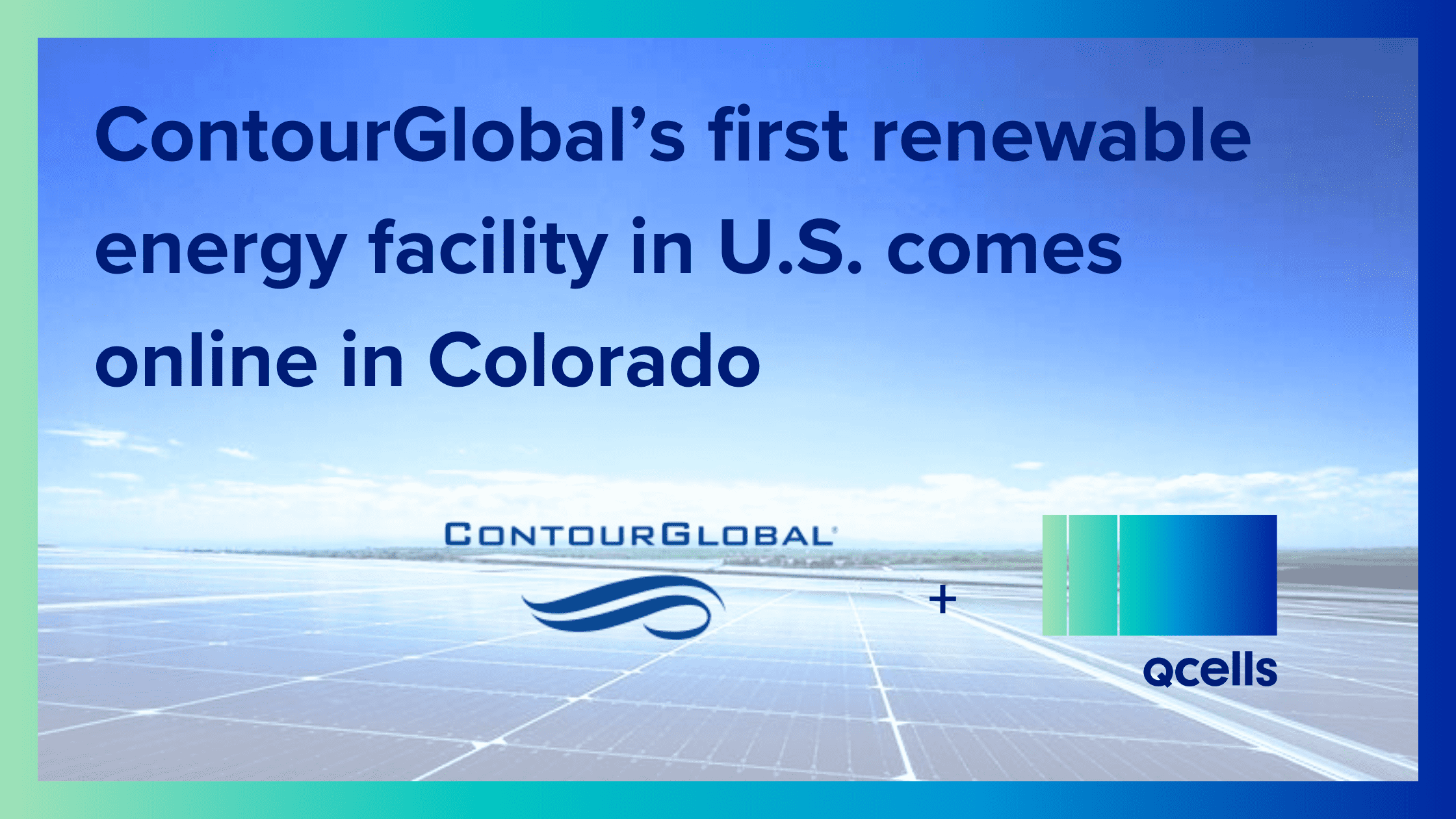
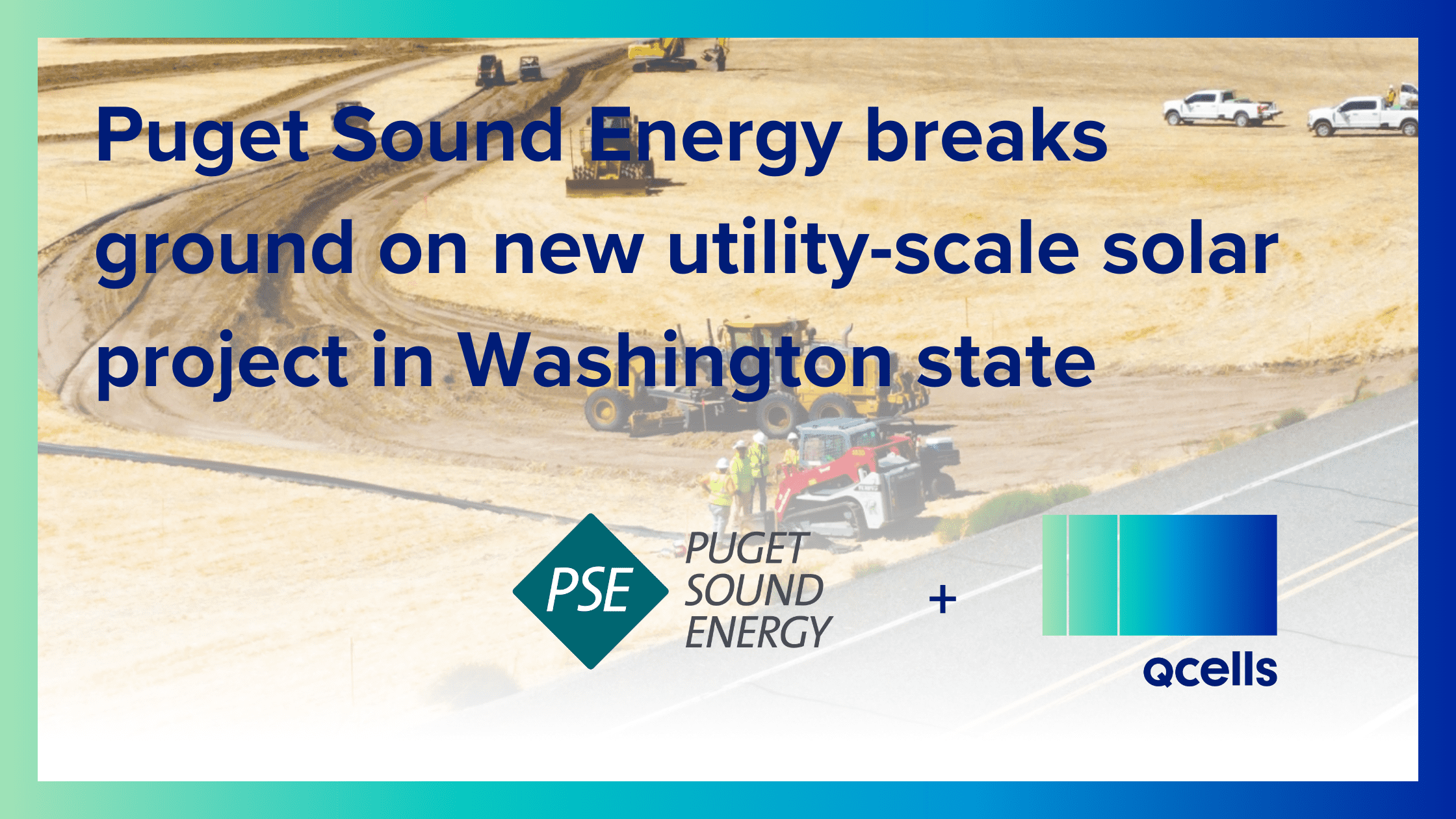
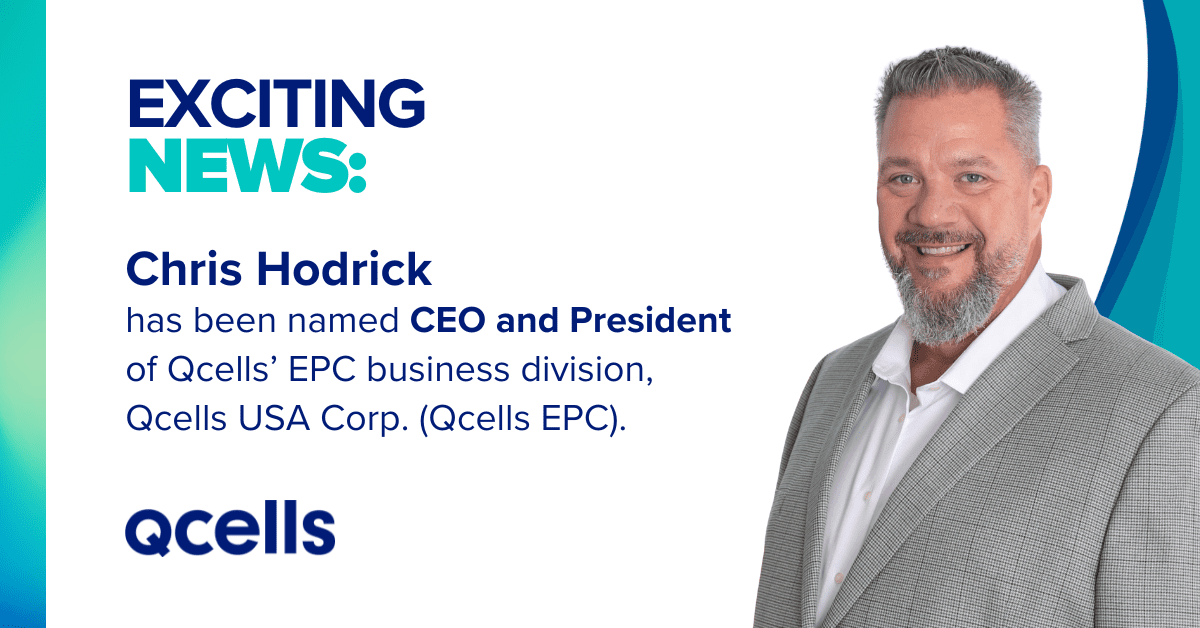
 USA & Canada
USA & Canada Korea
Korea Germany
Germany United Kingdom
United Kingdom France
France Italy
Italy Netherlands
Netherlands Greece
Greece Poland
Poland Portugal
Portugal Hungary
Hungary Spain
Spain Japan
Japan